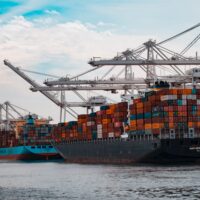Foreign Trade Zones (FTZs)

Foreign Trade Zones (or, “FTZs”) are licensed domestic “trade-free” sites (or “zones”) recognized as being outside the nation’s customs territory. Within the bounds of an FTZ, goods can be uploaded, manufactured, reassembled, and re-exported without being subject to U.S. customs duties, tariffs, and taxes or state and local inventory taxes. Combining domestic operations with foreign inputs, FTZs:
- promote international competitiveness,
- facilitate and expedite international trade,
- retain and create jobs; and
- encourage investment, manufacturing, and logistics.
Usually, FTZs are located in areas of geographic trade advantage adjacent to a U.S. Customs and Border Protection port of entry. Special customs procedures are normally used to attract and incentivize industrial manufacturing industries to develop within the designated bounds of an FTZ, but local jurisdictions may consider providing additional economic development incentives to those companies operating within an FTZ.
Merchandise may be transferred from one FTZ to another under a customs bond (i.e., without duty payment for transportation). Duties and excise taxes are only incurred when FTZ merchandise enters the U.S. marketplace for consumption. At that point, importers may elect to exercise an inverted tariff and either pay the duty rate applicable to the imported parts or to the finished product into which those imported parts have been incorporated, whichever is lower. In other cases, components manufactured in an FTZ that are used to make a product that is subsequently exported will not incur U.S. duties on the value of the component.
As of December 2022, Texas has 34 FTZs, more than any other state in the nation, attracting manufacturing industries such as oil refinement, vehicle and automotive parts, consumer electronics, and pharmaceuticals. Major companies operating in Texas within an FTZ, include BASF, CITGO, Dell Computer, Dow Chemical, Exxon Mobil, General Motors, Shell Oil, and Zale Corporation. An FTZ may also be used for warehousing, inspections, labeling, salvaging, and distribution. (Retail trade is prohibited.)
FTZs may also contain “Subzones.” A Subzone serves as a special-purpose zone, typically approved for use by one company for a specific activity. Texas subzones hold five of the top ten rankings for the value of manufacturing operations-related merchandise.
It’s a two-step process to create an FTZ. The authority to actually create an FTZ is found in the Foreign-Trade Zones Act of 1934, which created a Foreign-Trade Zones Board responsible for reviewing applications to establish, operate, and maintain FTZs. First, the Board must find that an FTZ is necessary to adequately serve the public interest prior to issuing approval. Second, U.S. Customs and Border Protection must then approve the activation of the FTZ prior to admitting any merchandise into the FTZ.
All FTZs are supervised by U.S. Customs and Border Protection through the oversight of FTZ activity, compliance reviews and visits, and maintenance of certain security standards. The Board may decide to exclude merchandise that is – in its judgment – detrimental to the public interest, health, or safety. Restrictions may also be placed on the kind of operations conducted in the FTZ and entry of the merchandise into commerce.
The requirements to establish an FTZ are rigorous, but the benefits to the local, state, and national economies are great. With many of the areas around our coastal ports and airports being home to FTZs, the railways and transportation corridors between our major cities remain primed for the development opportunities and benefits FTZs and their Subzones may bring to local industry.
Please do not rely on this article as legal advice. We can tell you what the law is, but until we know the facts of your given situation, we cannot provide legal guidance. This website is for informational purposes and not for the purposes of providing legal advice.
